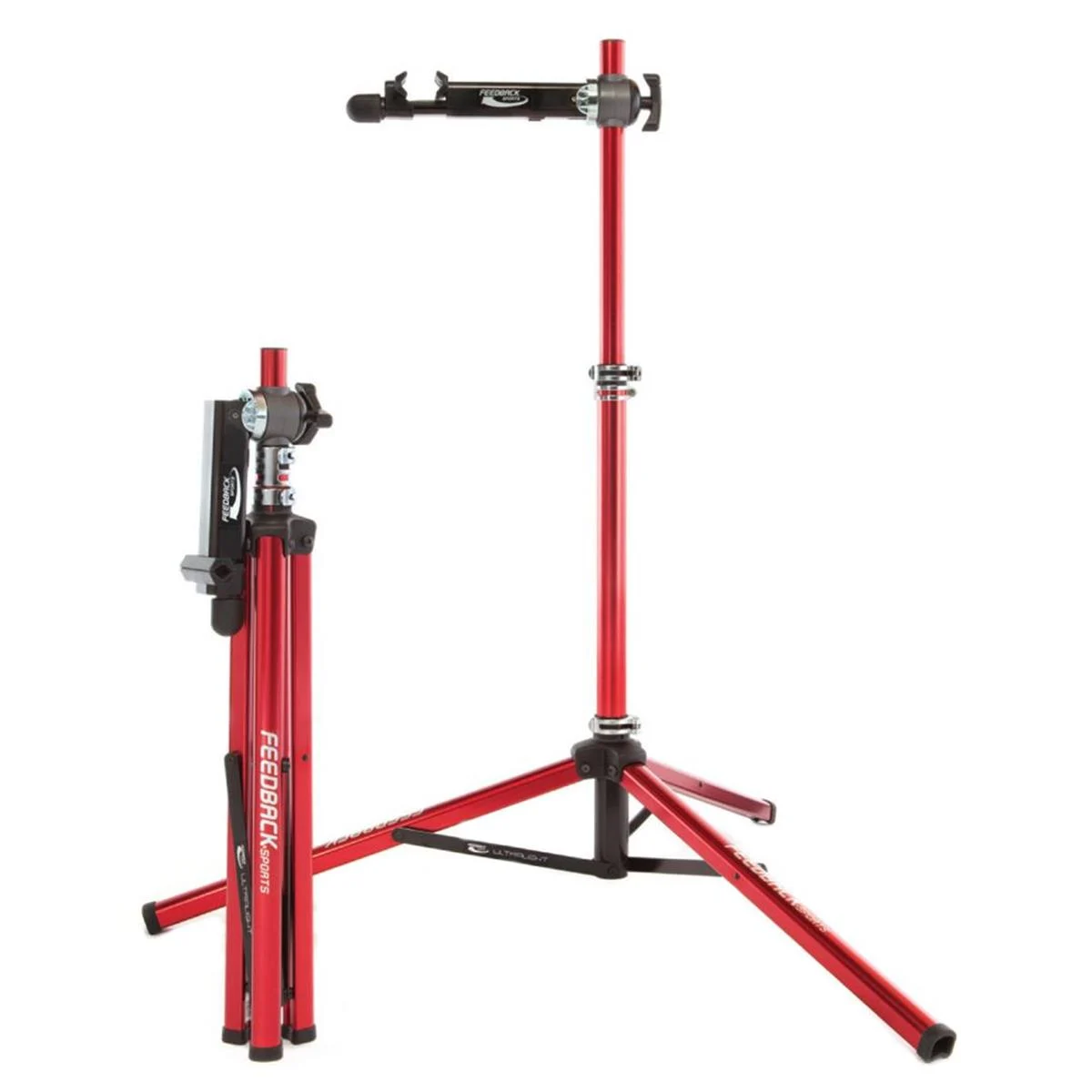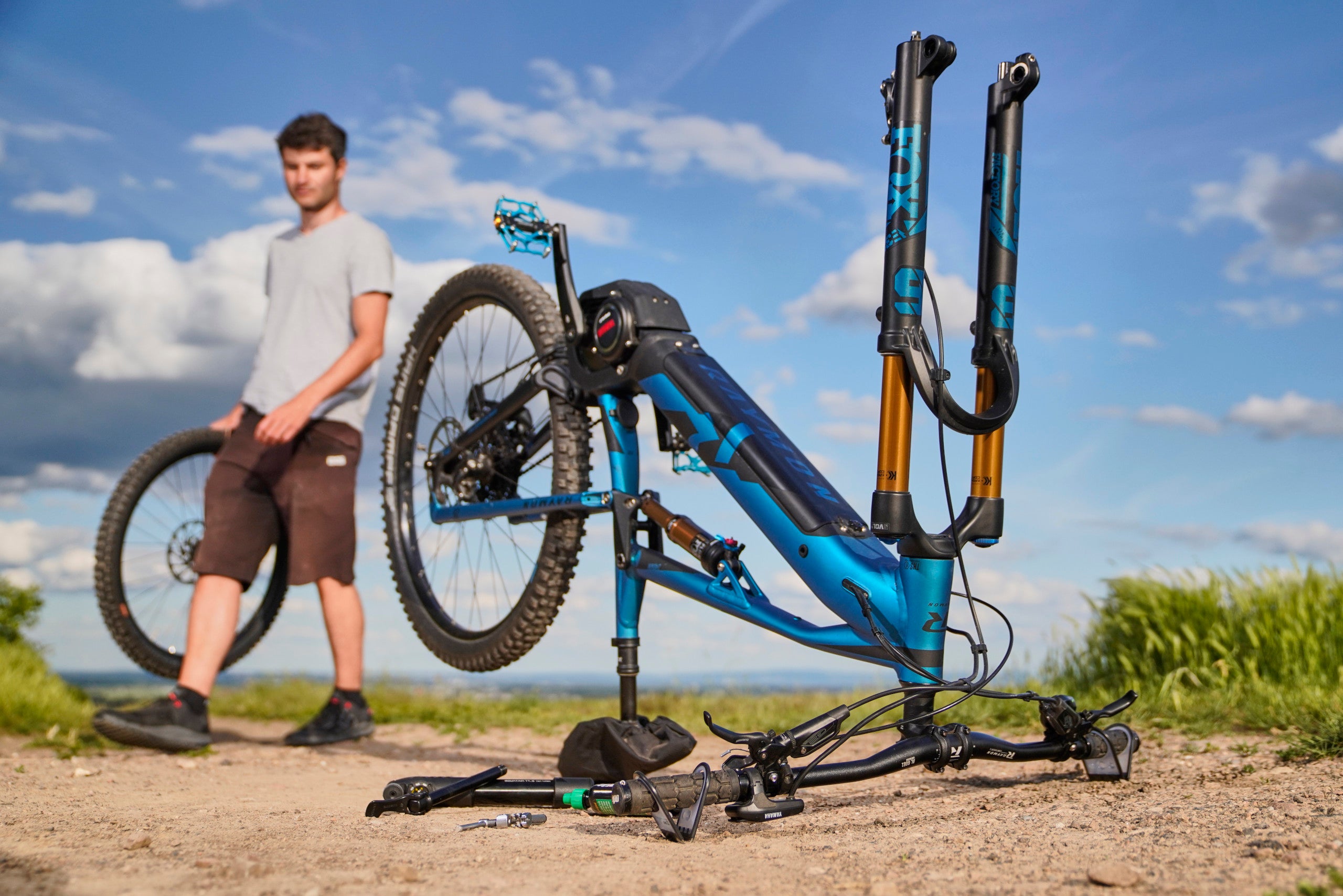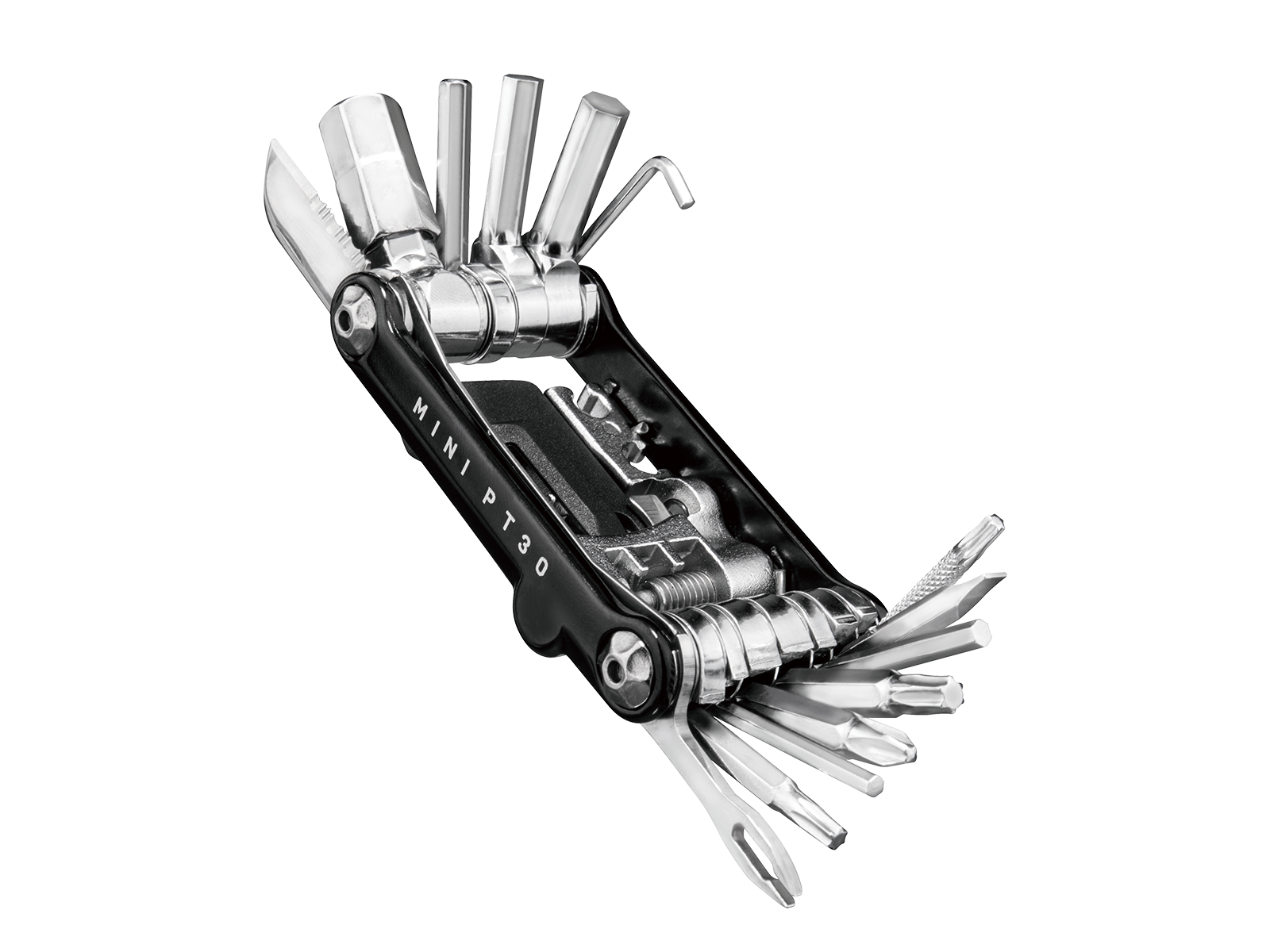Do you ever wonder about mountain bike circuit adjustment and how it can make your rides better?
Well, mountain biking isn't just a thrilling sport; it's like a dance between you and your bike. When you ride on bumpy trails, jump over things, or zip down paths, every part of your mountain bike has a role in keeping you safe and having fun.
Yet, one often overlooked aspect critical to your bike's performance is its circuit. To make sure you have a smooth shifting, efficient pedaling, and peak performance, you need to adjust it just right.
It doesn't matter if you're an experienced rider or just starting; knowing how to tweak your mountain bike's circuit is super important. This guide will help you understand mountain bike circuit adjustment so you can make your rides the most enjoyable and safest they can be.
Furthermore, we've got an innovative solution for you – the BikeVlip by Bike Evolution. It's a game-changer in bike maintenance, ensuring smoother rides, and fewer headaches.
So, let's get started!
Essential Mountain Bike Circuit Adjustment Prerequisites
A mountain bike's performance and efficiency depend significantly on its gear system and drivetrain. These components collectively make up what we refer to as the "circuit."
To ensure your mountain bike functions smoothly and efficiently, it's essential to understand the prerequisites for maintaining and making mountain bike circuit adjustments, which are vital for optimal performance.
Understanding the Mountain Bike Circuit
The mountain bike circuit comprises several key components, including:
- Cranks and chainrings
- Chain
- Front derailleur
- Rear derailleur
- Cassette
- Shifters
The circuit's primary function is to transfer power from your pedaling to the rear wheel and allow you to shift gears. The gear system within the circuit is designed to allow you to pedal efficiently in different terrains and conditions. Understanding how these components work together is the foundation for maintaining a well-functioning circuit.
Regular Maintenance
Routine maintenance is paramount for a smoothly operating circuit. Dirt, debris, and even moisture can compromise its efficiency. Here are essential maintenance tasks:
- Cleaning and Lubrication: Routine cleaning and lubrication are paramount to prevent dirt and debris from affecting the mountain bike circuit adjustments’ efficiency. This maintenance helps ensure smoother gear shifting and prolongs component lifespan.
- Chain and Cassette Inspection: Regularly inspect and replace the chain and cassette when necessary, especially after riding in challenging conditions.
Quality Component Selection
Opt for high-quality components when replacing or upgrading parts of your circuit. Quality parts not only enhance performance but also reduce the risk of breakdowns on the trail.
And here's an excellent example: the BikeVlip by Bike Evolution. It offers features that simplifies the process of working with top-tier components E-mountain bikes, making it easier and more efficient to complete upgrades and replacements.
The design of BikeVlip safeguards your bike's sensitive components, including handlebars, levers, and displays. This protection guarantees that your investment in quality parts is preserved, reducing the risk of damage during maintenance.
Proper Installation and Adjustment
- Alignment: Ensure proper alignment and installation of components, such as the derailleur, as this significantly impacts gear-shifting performance.
- Derailleur Adjustment: Regularly adjust front and rear derailleurs to maintain smooth and precise gear changes.
Rider Technique
- Gear Selection: You must also understand about when to shift gears for efficient riding. Lower gears are suitable for uphill climbs, while higher gears are ideal for downhill and flat terrain.
- Avoiding Cross-Chaining: Avoid extreme gear combinations or cross-chaining, as they can strain the circuit and lead to premature wear.
One thing to note here is that modern mountain biking has seen significant changes in bike design. Many new Premium-E-Mountain bikes are now featuring just one chainring, reducing the occurrence of cross-chaining issues.
So, the prerequisites mentioned above enhance your biking experience and help you maintain speed and momentum on the trail. Follow these guidelines, and you'll be well on your way to conquering the trails with confidence and ease.
Mountain Bike Circuit Adjustment: Preparatory Measures
Mountain bike circuit adjustment requires careful preparation to ensure accuracy and safety during the process. Proper preparation makes the task smoother and aids in achieving optimal results.
Here's what you need to do before diving into the adjustment process:
Gather the Necessary Tools
Before you begin mountain bike circuit adjustment or setting, it's essential to gather all the required tools. These tools include:
- A set of screwdrivers (flat-head and Phillips)
- Pliers
- For securely positioning your bike, you can opt for a bike stand or use our innovative product, the BikeVlip. It offers a compelling alternative to traditional bike stands, combining stability, protection, and portability, making it an excellent choice for on-the-go repairs and maintenance tasks.
- Allen wrenches or hex keys for specific adjustments
- Cable cutters (if you need to trim or replace cables)
- Specialized tools for suspension adjustments, such as a shock pump, a sag meter, and a rebound damping knob.
These readily available tools ensure that you won't face interruptions during the adjustment process.
Clean the Bike
Start by thoroughly cleaning your e-mountain bike. A clean bike is essential for several reasons:
- It helps you identify any hidden issues with the bike's suspension system.
- Dirt and debris can hinder the adjustment process, so removing them is crucial.
- A clean bike allows for a better visual inspection of components.
Use a chain cleaner or degreaser to clean the chain, wipe down the derailleur, shifters, and cogs, and ensure no debris is trapped in any of the bike's components.
Inspect the Components
Before making any adjustments, a careful inspection of various bike components is necessary:
- Inspect the suspension system for any indications of wear or damage. Check the fork stanchions, shock shafts, and seals for scratches, dents, or leaks. If you notice any issues, consider having a professional mechanic inspect and repair your suspension system.
- Inspect the gear components, such as the derailleur, chain, gear cables, and housing. Look for signs of damage, wear, or rust. Addressing these issues before adjustment is important for a smooth process.
Position the Bike Appropriately
Place your mountain bike on a sturdy bike stand or an elevated platform. This positioning allows easy access to all bike parts, including the underside.
For the utmost stability and convenience, consider using BikeVlip, the compact and self-tightening assembly stand.
BikeVlip offers secure support, ensuring your bike remains stable during maintenance. Its compact design makes it an excellent choice for on-the-go adjustments or at-home maintenance.
With BikeVlip, your bike is positioned perfectly, giving you easy access to all components.
Understand Damping Adjustments
Your concepts of compression and rebound damping must be clear. Compression damping controls how fast the suspension compresses during impact, while rebound damping regulates the rate at which it returns to its original position.
An in-depth knowledge of these adjustments is crucial for optimizing your suspension system.
Thus, with all the mountain biking trail essentials and comprehensive preparation for your mountain bike circuit adjustment, you can enjoy enhanced performance and a safer riding experience.
Step-by-Step Guide to Setting the Circuit on Your Mountain

Mountain bike circuit adjustment might seem daunting, but you can fine-tune it to perfection with a systematic approach. Here's a comprehensive step-by-step guide to help you set the circuit efficiently:
Step:1 Start with the Rear Derailleur
Place your bike in the stand and shift the chain to the smallest chainring and rear cog. This position serves an excellent starting point.
Step 2: Adjust the Limit Screws
The limit screws, typically labeled 'H' (high) and 'L' (low), determine how far the derailleur can move in either direction. These screws prevent the chain from dropping off the cogs:
- High (H) Limit Screw: While slowly turning the pedals, adjust the 'H' screw until the jockey wheel of the rear derailleur aligns perfectly under the smallest cog.
- Low (L) Limit Screw: Shift to the largest rear cog and adjust the 'L' screw, ensuring the jockey wheel aligns under the largest cog.
Step 3: Set the Cable Tension
If your shifts aren't crisp or the chain doesn't move correctly as expected in mountain bike circuit adjustment:
- Turn the barrel adjuster on the rear derailleur slightly clockwise if the chain isn't moving to a larger cog smoothly.
- Turn the barrel adjuster counter-clockwise if the chain isn't moving to a smaller cog smoothly.
Step 4: Adjust the Front Derailleur
After ensuring the rear derailleur is set:
- Move the chain to the largest rear cog and smallest front chainring.
- Check the clearance between the front derailleur and the chain. It should be about 1-3mm. Adjust the low-limit screw if necessary.
- Shift the chain to the smallest rear cog and the largest front chainring and adjust the high limit screw similarly.
Step 5: Fine-tune the Cable Tension for the Front Derailleur
If the chain isn't shifting smoothly between the front chainrings, adjust the barrel adjuster on the shifter or the front derailleur until you achieve smooth and direct shifts between the front chainrings. This ensures seamless operation during mountain biking adventures and effective mountain bike circuit adjustment.
Step 6: Test the Entire Range
Shift through all gear combinations to ensure smooth transitions. Ensure there's no rubbing noise and that the chain doesn't drop.
Step 7: Recheck After a Ride
Once the mountain bike circuit adjustment is complete, take your bike for a short ride. Sometimes, under load, you might notice issues you didn't spot on the stand. Make further micro-adjustments as needed.
Setting the mountain bike circuit adjustment ensures better performance, reduces wear and tear on components, and offers a smoother riding experience. With patience and practice, even beginners can master the art of circuit adjustments.
How to Set The Correct Tension During Mountain Bike Circuit Adjustment?
Setting and maintaining the correct tension on your e-mountain bike is vital for its performance and durability. Proper tension applies to both the chain and cables, ensuring smooth gear shifts and efficient power transfer.
Here's what you can do to achieve and sustain the right tension during mountain bike circuit adjustment:
Chain Tension
Derailleurs: If your bike has derailleurs:
- Check Chain Slack: In middle gears, the chain should have a slight give when pushed but should not sag.
- Inspect Derailleur: Ensure the rear derailleur is not excessively stretched or too far from the cassette, as this could indicate a chain that's too long.
- Chain Replacement: Over time, chain can wear down. Use a chain wear tool to assess if a replacement is necessary to prevent slipping and excessive wear on the cassette and chainring.
Single-speed or Internal Hub Gears
- Adjust Using Dropouts: Some bikes have horizontal or track dropouts, allowing you to slide the rear wheel slightly for desired chain tension.
- Chain Tensioners: If your bike lacks adjustable dropouts, consider using a chain tensioner to achieve the correct tension.
Cable Tension
Proper cable tension is critical for efficient shifting and effective braking.
- Shifting Cables: Incorrect cable tension can lead to slow or inaccurate shifting. Adjust tension using barrel adjusters on the derailleur or shift levers to ensure precise gear changes.
- Brake Cables: For mechanical disc brakes and rim brakes, adjust cable tension using the barrel adjusters located on the brake levers or brakes themselves to achieve the desired braking feel.
Periodic Maintenance
Regular checks and adjustments are essential to maintain proper tension:
- Regular Inspection: Cables may stretch, and chains can wear over time. Periodically inspect and make necessary adjustments.
- Lubrication: Keep the chain well-lubricated to ensure smooth operation and reduce wear.
- Replacement: Understand that chains, cables, and housing have a limited lifespan. Replace them when needed, especially if you notice fraying cables or if the chain is beyond its wear limit.
By following these guidelines, you'll ensure that your mountain bike maintains the correct tension for optimal performance and longevity.
The Bottom Line!
Mastering mountain bike circuit adjustment is crucial for an exhilarating and safe ride. Regular cleaning, quality components, precise alignment, and gear mastery are key.
By following step-by-step adjustment procedures, keeping chain and cable tension in check, and scheduling routine check-ups, you transform your e-mountain bike into a seamless extension of yourself. This guarantees an exhilarating experience on every trail you conquer.
And, to make the process even smoother, consider the BikeVlip by Bike Evolution- a tool that makes maintenance and adjustments hassle-free.
So, gear up, hit the trails, and revel in the joys of mountain biking!

















